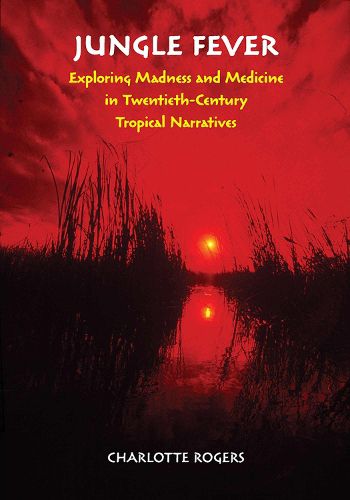Readings Newsletter
Become a Readings Member to make your shopping experience even easier.
Sign in or sign up for free!
You’re not far away from qualifying for FREE standard shipping within Australia
You’ve qualified for FREE standard shipping within Australia
The cart is loading…






The sinister
jungle -that ill-defined and amorphous place where civilization has no foothold and survival is always in doubt-is the terrifying setting for countless works of the imagination. Films like Apocalypse Now, television shows like Lost, and of course stories like Heart of Darkness all pursue the essential question of why the unknown world terrifies adventurer and spectator alike. In Jungle Fever, Charlotte Rogers goes deep into five books that first defined the jungle as a violent and maddening place. The reader finds urban explorers venturing into the wilderness, encountering and living among the
native
inhabitants, and eventually losing their minds.
The canonical works of authors such as Joseph Conrad, Andre Malraux, Jose Eustasio Rivera, and others present jungles and wildernesses as fundamentally corrupting and dangerous. Rogers explores how the methods these authors use to communicate the physical and psychological maladies that afflict their characters evolved symbiotically with modern medicine. While the wilderness challenges Conrad’s and Malraux’s European travelers to question their civility and mental stability, Latin American authors such as Alejo Carpentier deftly turn pseudoscientific theories into their greatest asset, as their characters transform madness into an essential creative spark.
Ultimately, Jungle Fever suggests that the greatest horror of the jungle is the unknown regions of the character’s own mind.
$9.00 standard shipping within Australia
FREE standard shipping within Australia for orders over $100.00
Express & International shipping calculated at checkout
The sinister
jungle -that ill-defined and amorphous place where civilization has no foothold and survival is always in doubt-is the terrifying setting for countless works of the imagination. Films like Apocalypse Now, television shows like Lost, and of course stories like Heart of Darkness all pursue the essential question of why the unknown world terrifies adventurer and spectator alike. In Jungle Fever, Charlotte Rogers goes deep into five books that first defined the jungle as a violent and maddening place. The reader finds urban explorers venturing into the wilderness, encountering and living among the
native
inhabitants, and eventually losing their minds.
The canonical works of authors such as Joseph Conrad, Andre Malraux, Jose Eustasio Rivera, and others present jungles and wildernesses as fundamentally corrupting and dangerous. Rogers explores how the methods these authors use to communicate the physical and psychological maladies that afflict their characters evolved symbiotically with modern medicine. While the wilderness challenges Conrad’s and Malraux’s European travelers to question their civility and mental stability, Latin American authors such as Alejo Carpentier deftly turn pseudoscientific theories into their greatest asset, as their characters transform madness into an essential creative spark.
Ultimately, Jungle Fever suggests that the greatest horror of the jungle is the unknown regions of the character’s own mind.